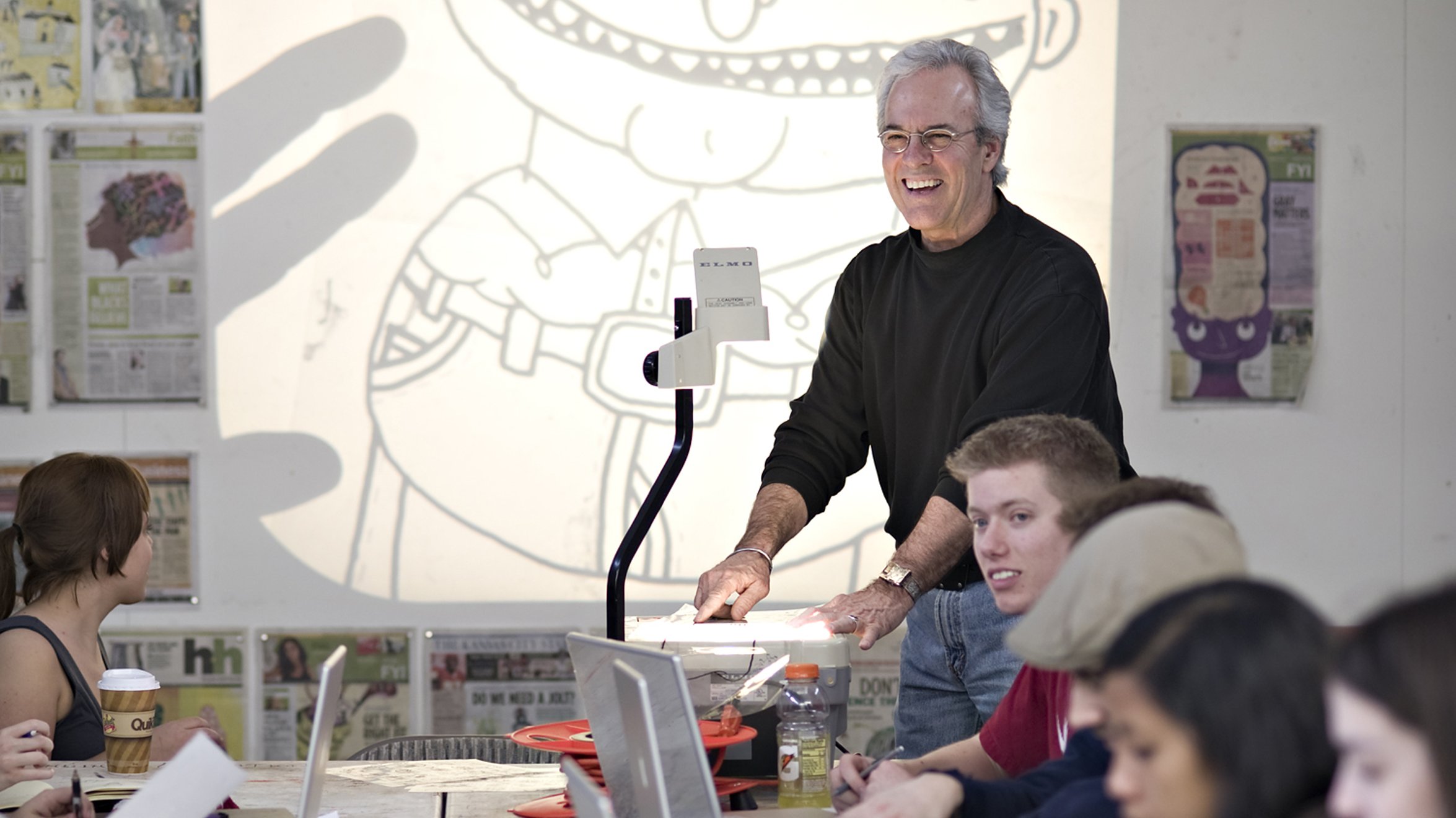
Steve Mayse: Illustration Senior Professor Started with Blank Page
09.12.2024
Presently, he brings more than 45 years of practical professional experience to his teaching at the Kansas City Art Institute.
However, his path to becoming a Senior Professor in Illustration is one of the largest influencers to his approach in the classroom.
A chunk of wood. A piece of string. A screw. A washer. A lollipop. Steve Mayse prefers the word "sucker" to describe the candy.
"The students can enjoy that while they figure out what to do with the rest of it," Mayse said.
It's all a part of the Zip-Lock Baggie Project from his Image and Form Exploration class. Each student receives an identical bag with identical objects. They're told to create an image with those objects to communicate the feeling of a word.
With a three-hour time limit for the assignment, the example word he gives is, appropriately, "Anxiety."
"I think overall what I'm asking them to do is be a visual solution finder or a visual problem solver," Mayse said. He's still settling into his fresh Senior Professor title, bestowed at the start of the 2024 school year.
The title denotes a deep commitment to the Kansas City Art Institute and his discipline: Illustration.
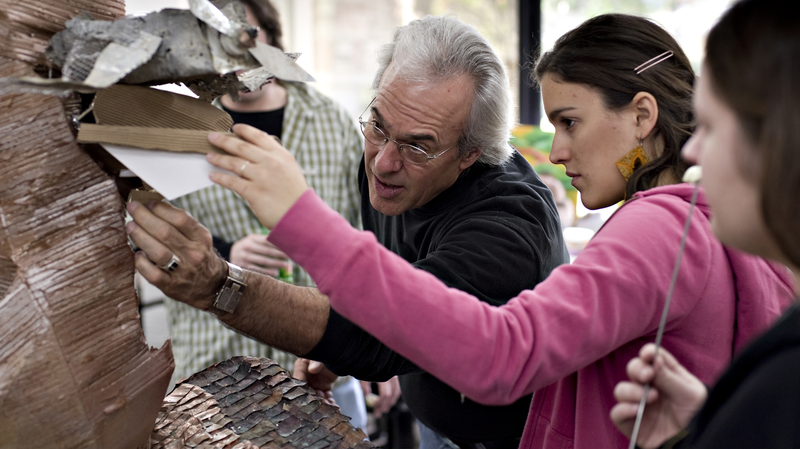
Mayse first came to KCAI in 1988 as a lecturer. He ran his own freelance business and had been doing national work for about 19 years. He had 2 years teaching experience, previously working with students in Australia. But he says he was more focused on practical art issues then.
As he put it: In advertising, people would tell you what to do and you match the commission with your portfolio’s images.
"I always looked up to the movers and the shakers in editorial work. They were doing much more personal work and applying that to their work, so I changed my focus,” Mayse said.
"Students always want to mimic an artist - the easier journey. And I try to get them out of their comfort zone. Many want to do the stereotypical thing because they understand it, it's simple, and just maybe not either current nor relevant," he said.
"But the [illustration] program is all about communication, storytelling, and perhaps your personal point-of-view," he said.
From an outside point-of-view, the story of the program is simple. Illustration has the highest enrollment among KCAI majors and is buoyed by a new approach to the curriculum with Mayse acting as catalyst for that change. A smooth ride worthy of the creator of Rail Day.
"Students always want to mimic an artist - the easier journey. And I try to get them out of their comfort zone."
But from Steve's point-of-view, the path of the program more closely resembles his name: a maze, meandering with dead-ends, double-backs, and an unexpected email in 2005.
"The email said they closed it - that KCAI had ended the program. They got rid of illustration," Mayse said. "I went to a meeting with the [administration] about the school having already made this decision at the time and I couldn't sit down. All I could do was pace the room."
"They said they couldn't guarantee jobs anymore in illustration. I asked 'Well, based on that employment promise, when are you planning on closing the entire school?' I was fired-up. This was at a time when the illustration profession was going through some changes and was slipping a bit toward more use of the computer. I think the focus was more on building graphic design - an understandable blending of the two," he said.
Frustrated, Mayse went on sabbatical after 'teaching out' the remaining students in the program. He traveled to the Czech Republic, taking on an artist residency with a group where he was the oldest person by far. He created a large sculpture and left it behind, hanging in a community building. To this day he continues integrating the 3rd dimension into his art.
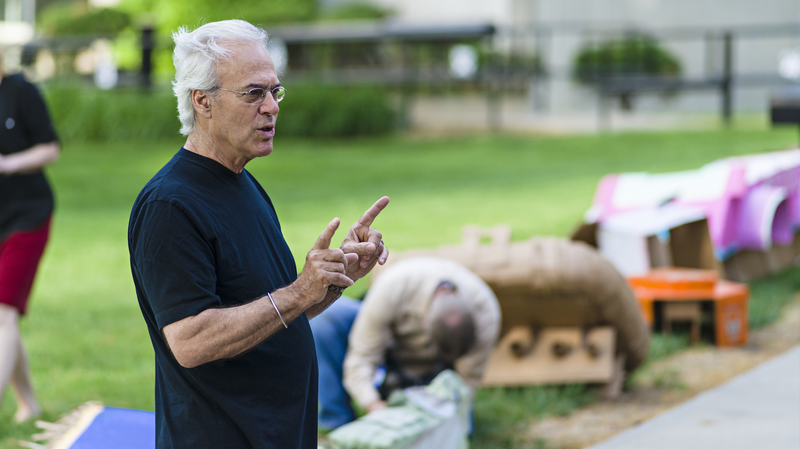
Then came the call. KCAI wanted to relaunch the illustration program. They wanted him to consider bringing it back.
With the decision before him he recalled a conversation with a past chair of the old illustration program. A comment about the department's exhibition from the former chair: "All we have on the walls are portraits or animals with little emphasis on content or visual communication issues. Seems limited."
Mayse agreed to re-build the program but decided to make changes. He wanted students to explore, to invent, and to innovate. He wanted to pull things out of students that they might not imagine about themselves. He formed all new courses with more contemporary titles. For example, Figure Drawing became Organic Perceptions, a sibling to the Mechanical Perceptions course which focused solely on backgrounds. Put the two course experiences together and the students had something more integrated.
In 2010, he says faculty members (2 full-timers and multiple adjuncts) along with 28 students who he called "his brave souls" followed him without promise of a building or clear-staffing. He didn’t have any examples of current student work. It didn’t exist. KCAI housed the resuscitated program in a little building facing South on East 43rd Street across from the Artspace.
"The door buzzer didn't work. The toilets overflowed. Mice were everywhere," Mayse said. "But the content of our work was good." The next year they had 40 new sophomores. The next year there were more than 100 students in the program.
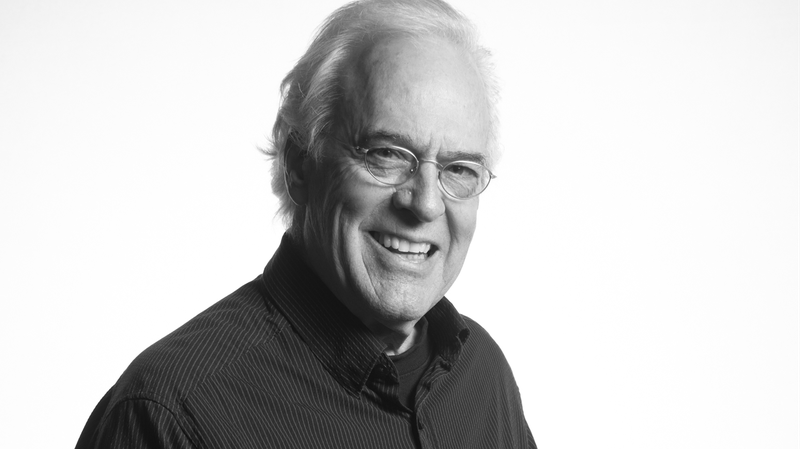
He credits his team for the success: John Ferry focused on fine art and institutional work, Maura Cluthe covered the corporate work arena, Héctor Casanova had the editorial work and David Terrill handled the realm of advertising. From those four corners of the illustration practice Mayse had professors who brought many years of experience from their individual illustration areas. Il Sung Na was hired to round out the program and additional adjunct hires more recently added to the bench.
“Without them, I don’t believe this would have ever worked. Together, collectively, we have over 100 years of experience in the illustration practice. Today the students continue to express that they feel this depth in the classroom, too,” Mayse said.
Soon, he was thinking about retirement.
"I told the president [Tony Jones] and he didn't like hearing that. He said 'I want to give you a new building and I want to endow your position.'"
"I said to Tony and the Vice President of Academic Affairs that I’d stay to manage the move to the new building but then I wanted to step out of the chair position for my remaining years at KCAI. My interest has always been in teaching, not administration," Mayse said.
"Earlier, after achieving a full program in 2013, sophomore-thru-senior, I had asked for a search for an illustration chair because I didn’t want to do it. That failed. So I was asked to do it and ended up doing it for eleven years or so," he said.
For the new building, Mayse made a scaled foam core model and looked at how to get 120 studios into the planned first floor building. When the Tony Jones Studio Building opened, it took some time to take advantage of the space because of the pandemic. But the momentum carried forward.
"Along the way, year-to-year, the students discover how they want to work," Mayse said. "We've had students who have done so many different, inventive things. We've even had students who've worked in crochet as an illustration process. We've had others who feel compelled to do large-scale images, a reliance on photography, 3D and of course, digital. We faculty simply try to present to them all of these different options and see if it piques any interest."
But soon he got a doctor's diagnosis: temporomandibular joint lockjaw. The possible cause: stress. That's when he made the decision to give up the chair.
During that process he reminded and reassured faculty that he didn't have sole ownership over the department’s form or function. He welcomed any future changes knowing from personal experience how the industry is naturally fluid - the program should reflect that growth or change.
“I want the department to explore ‘form’ just like our students are asked to do. I enjoy the play that comes along from trying to discover something new," he said.
“I'm just happy to see that we give our students a breadth of opportunity so that they can have a chance at finding their niche and then live their lives as creative art practitioners. I'm constantly amazed by their gifts," he said as Senior Professor, a title offering one way to put together the pieces outside his personal Zip-Lock Baggie.
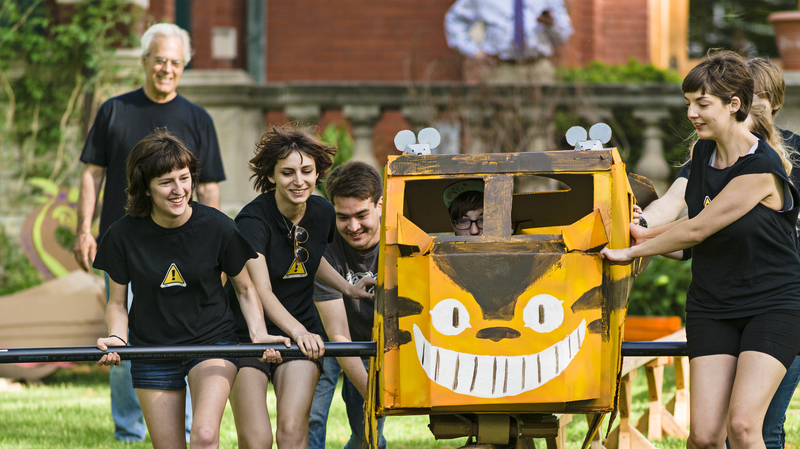
"Along the way, year-to-year, the students discover how they want to work. We've had students who have done so many different, inventive things. We've even had students who've worked in crochet as an illustration process. We've had others who feel compelled to do large-scale images, a reliance on photography, 3D and of course, digital. We faculty simply try to present to them all of these different options and see if it piques any interest."